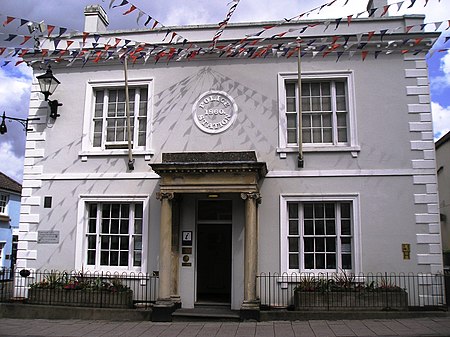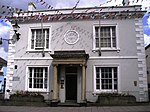Thornbury, Gloucestershire
Civil parishes in GloucestershireEngvarB from October 2013Market towns in GloucestershireSouth Gloucestershire DistrictThornbury, Gloucestershire ... and 1 more
Towns in Gloucestershire

Thornbury is a market town and civil parish in the South Gloucestershire unitary authority area of England, about 12 mi (19 km) north of Bristol. It had a population of 12,063 at the 2011 census. The population has risen to 14,496 in the 2021 census. Thornbury is a Britain in Bloom award-winning town, with its own competition: Thornbury in Bloom. The earliest documentary evidence of a village at "Thornbyrig" dates from the end of the 9th century. Domesday Book noted a manor of "Turneberie" belonging to William the Conqueror's consort, Matilda of Flanders, with 104 residents.
Excerpt from the Wikipedia article Thornbury, Gloucestershire (License: CC BY-SA 3.0, Authors, Images).Thornbury, Gloucestershire
The Plain,
Geographical coordinates (GPS) Address Nearby Places Show on map
Geographical coordinates (GPS)
| Latitude | Longitude |
|---|---|
| N 51.6094 ° | E -2.5249 ° |
Address
The Royal George
The Plain 7
BS35 2AG
England, United Kingdom
Open on Google Maps








